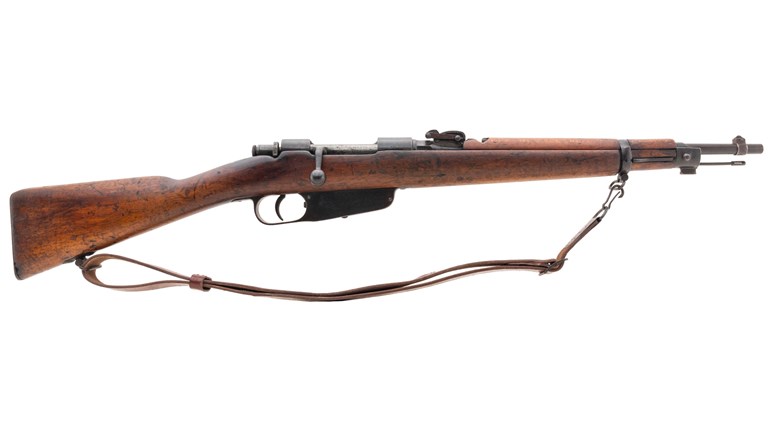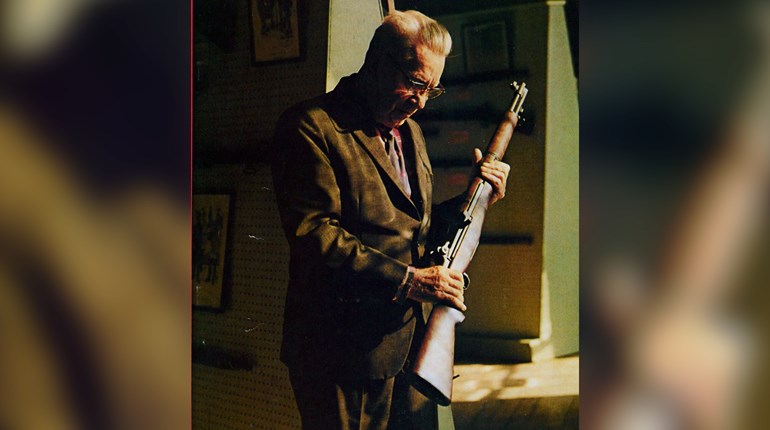
Any analysis of the Western front in World War II leaves little doubt: 71 years ago this week the Ardennes Counteroffensive—more commonly known as the “Battle of the Bulge”—was the crucial, final large-scale engagement between Allied and German forces.

It also caught the Allies almost totally unaware, and along the thinnest part of their northern European lines. For the Germans, it was a desperate throw that came harrowingly close to succeeding.
Troops under Supreme Allied Commander General Dwight Eisenhower had pushed German positions steadily back across a broad front in France, the Netherlands, and Belgium during the late summer and early autumn of 1944. In the wake of successful D-Day landings, a true breakout from Normandy had not been achieved until the end of July. Then, the rapid advance of Allied armies had put major stress on logistical support of the troops. Units often had to wait for virtually everything to catch up with their positions: As winter closed in, cold-weather clothing, ammunition, food and fuel were constantly in short supply.
On the other side of the lines, conditions were peculiarly both better and worse. Allied air power denied the German military many things, including the means of production for crucial materials—especially fuel and lubricants—and intelligence. But Germany also found her lines much shortened as the Allies neared pre-war German borders: The already-battered Wehrmacht and Luftwaffe had less to defend.
As autumn advanced, Führer Adolf Hitler was determined to exploit what he saw as both a battlefield weakness and a political fracas in Allied leadership and field positions. In the wake of September’s Operation “Market Garden,” where a substantive bridgehead over the Rhine River and into Germany had not been achieved, the squabbles of British and American commanders (notably British Field Marshal Bernard Montgomery and U.S. Army Lieutenant General George Patton) came to Hitler’s attention. Believing a bold dash westward through Belgium to Antwerp would split the roughly 80,000 mainly infantry British and American defenders, he hoped to repeat the rapid 1940 German transit of the Ardennes. If successful, he could entrap four Allied armies and negotiate from a position of strength for an end to hostilities in the west. All of Germany’s remaining forces could then be thrown against the Russians advancing through Poland and Slovakia in the east.Führer Adolf Hitler was determined to exploit what he saw as both a battlefield weakness and a political fracas in Allied leadership and field positions.
Difficult terrain led the Allies to believe any German offensive was unlikely to take place in the Ardennes: Two forested plateaus—lower in the west and higher in the east—were crisscrossed only by small roads running through often-deep ravines. With Allied air dominance limiting mobility during daylight hours, the only realistic German hope depended on stealthy preparation and lightning speed. Both were to some extent achieved: Wehrmacht communications were now taking place inside Germany where landlines could be employed—only limited radio communications decrypts were available to Eisenhower and other Allied commanders. Intelligence analysis suggested that the Nazi war machine was simply too short of everything for anything but defensive operations, and the Germans encouraged this belief. Bad weather decided the final date: With a solid week of low clouds nullifying the air power advantage of the Allies and punishing cold expected for the week before Christmas, the opportunity seemed ripe. Attacking across an 80-mile front early the morning of Dec. 16, 1944, 200,000 German troops, 340 tanks, 1,600 artillery pieces and 2,000 aircraft would shatter the Allied notion of a defense-only German posture.
The most well-known assault came in the south and south-central sections of the front, eventually stalling at famous Bastogne, Belgium. There, the 28th Infantry Division put up an incredibly dogged defense, slowly yielding ground until Dec. 19. Trucked-in reinforcements from the famed 101st Airborne arrived and, though surrounded and badly outmanned/equipped, Bastogne did not yield its perimeter over six days of intense assault. Brigadier General Anthony McAuliffe (later General) there issued his famous “Nuts!” reply to Lieutenant General Heinrich von Lüttwitz’s demand for the town’s surrender. As the weather began to clear on Dec. 23, resupply by air reached the beleaguered defenders. At dusk on Dec. 26, Gen. Patton’s 4th Armored Division broke through the Germans to reinforce the exhausted, exposure-gnawed 28th and 101st. Reinforcements during the battle included African-American infantrymen for the first time as well: More than 2,000 soldiers normally limited to behind-the-lines duty by Army regulations volunteered to go into the Bulge, and General Eisenhower sent them up.
Hitler had handpicked the units that assaulted the northern—and shortest—routes to Antwerp and the North Sea. Despite being the best-equipped, they met ferocious resistance from the U.S. 2nd and 99th Divisions. Among the scattered defenders was an 18-man Intelligence and Reconnaissance Platoon of the 394th Infantry Regiment and four forward artillery observers. On the critical first day, they stalled the advance of the entire 6th Panzer Army at Lanzerath, Belgium. While holding the Germans at bay for more than 10 hours, the relatively inexperienced unit inflicted nearly 100 casualties. (They would also become the most decorated platoon for a single action in World War II after a delay of 37 years: In 1981, they were awarded a Presidential Unit citation and accompanying decorations including four Distinguished Service Crosses, five Silver Stars and 10 Bronze Stars with “V” device.)… they were awarded a Presidential Unit citation, and accompanying decorations including four Distinguished Service Crosses, five Silver Stars and 10 Bronze Stars with “V” device.
The German advance in the north would continue to fall behind a largely fuel-driven timetable. The terrain so easily bypassed in the blitzkrieg of 1940 was now too stubbornly defended. In the end, the intermediate targets of Liège and Spa—sought for their hoped-for Allied caches of fuel—would be denied the Germans by the 2nd and 99th. Outnumbered 5-to-1, those units inflicted casualties 18-to-1. The bottlenecks they created cost the Germans critical control of the Elsenborn Ridge and roads to the south and east. By Dec. 23, lead German units were forced to abandon their fuel-starved equipment and return to their lines on foot.
The Germans had their greatest success with attacks in the center of the Allied line. Still, a prolonged defense of St. Vith lasted until Dec. 21, ending only with Field Marshal Montgomery’s order to withdraw (American units were under his command due to the severing of communications lines). Advancing Panzers finally controlled the town, yet it had been a Dec. 17 objective: three days’ worth of fuel and ammunition late. This deep salient would create the famous “Bulge” in the battle. Key bridges over the Meuse River were in sight on Christmas Eve, but Antwerp was still 70 miles beyond when the Panzers ground to a halt on Dec. 24. Although the allies could not restore their lines until nearly the end of January, the Battle of the Bulge was over.
The Germans would mount only one more offensive in the West (farther south in Alsace), but in the aftermath of December it was doomed to failure. Casualties on both sides were nearly 100,000 dead and wounded, but while more men, fuel and machines poured in behind Allied lines, the Germans had only implacable Russians at their backs.
In the grim calculus of warfare, the Allies could simply “afford” the carnage of the Bulge, and the Germans could not. In four months, Hitler would be dead, and a week after that, the war in Europe over.


































